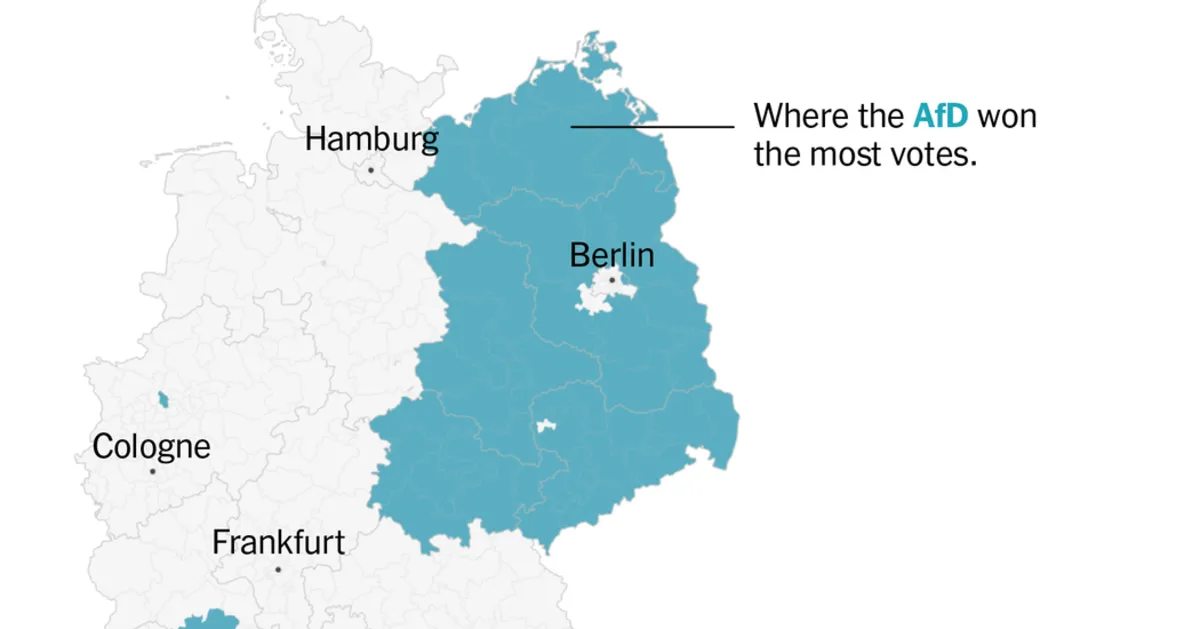
Three and a half decades after Germany's reunification, a significant divide persists where the Iron Curtain once stood. This division is no longer marked by barbed wires or guard dogs but is instead characterized by disparities in income and unemployment. More notably, it is increasingly evident in the voting patterns of Germans, particularly in their growing inclination towards extremist parties.
If East Germany were still an independent nation, the hard-right Alternative for Germany (AfD) would have achieved a substantial victory in the recent elections, securing nearly one-third of the votes. Despite the AfD's links to neo-Nazi elements and the ongoing surveillance by domestic intelligence, its popularity remains strong in the east.
In the former East Germany, only two out of 48 voting districts outside of Berlin were not won by the AfD. Remarkably, in several districts in the east, the AfD captured nearly 50 percent of the vote, signaling a profound political shift.
This political division underscores a deeper, ongoing separation between East and West Germans. Analysts suggest that this split reflects not only the incomplete integration of the east but also its distinct challenges and cultural identity. These aspects were shaped by decades of Communist rule during the Cold War and a close relationship with Moscow and the former Soviet bloc.
This enduring divide was evident not only in the recent elections but also during the voting for the European Parliament last June. It highlights a persistent feature of Germany’s political landscape that continues to influence voter behavior across the country.